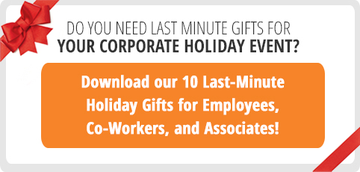How Old Spice Harnessed the Power of Complementary Marketing (And What It Means for Your Brand)
It’s easy to feel lost in the complex, brave new world of online marketing, where tweets or search engine results can be as crucial to your success as more traditional media. But never fear—the new school isn’t completely detached from the marketing you already know and love.
In fact, using your digital marketing resources to complement old school approaches can result in huge online successes. By looking closely at Old Spice’s recent and widely-praised major marketing campaign, let’s explore how complementary marketing helps brands navigate advertising in the modern world—and how you can do it, too.
What is complementary marketing?
Simply put, complementary marketing is what you get when the many arms of your marketing and branding work together in harmony. Whether your brand awareness comes from an email list or a broad social media campaign, you’ll be more successful when each component complements and feeds off of every other component. Complementary marketing means taking a look at each part of your marketing and making sure it’s aiming at a common identity.
How is Old Spice using complementary marketing to drive visibility and awareness?
Old Spice recently launched a marketing campaign to introduce their “Fresher” collection of nature-themed scents; each stick of deodorant or bottle of body wash comes packaged with a name like “Coconut” or “Roar.”
To usher in these new and novel scents, they released a series of video advertisements in which muscular men grapple with the complexities of nature while smelling fresh and clean. Armed with their brand’s distinctively edgy sense of humor, the videos poke fun at more traditional ads that evoke ideas of manliness, scientific breakthroughs, or nature to position a product as revolutionary.
These ad spots are hilarious and effective in their own right, but Old Spice’s team didn’t stop there. In addition to the videos, they’ve hijacked the #naturefacts hashtag by composing their own absurd, snarky “facts” about animals that call back to their line of scents. They’ve even rolled out a first-of-its-kind vending machine in New York’s Grand Central Terminal. The machine accepts only items from nature, and true to the Old Spice brand, it deposits bizarrely humorous items in return — for example, visitors can exchange ocean water for “all the wadded up cash in a rich guy’s pocket.”
It’s funny—but more importantly, it’s effective. Every piece of Old Spice’s marketing is working toward the same goal of promoting their transition to “nature” themed products; their multifaceted campaign is a perfect example of complementary marketing at work.
How can complementary marketing help your brand?
As we all know well, it’s easy for marketing campaigns to get messy. Sometimes the parts aren’t working in sync. Other times, the overall concept misses its mark, and the brand falls on its face as a result. But no matter your approach, your campaigns will stick in the minds of your target audience best if your various approaches are aligned.
You may look to SEO, social media, print materials, even television ads — but don’t forget to make sure that each of these are bolstering one another. When it comes to marketing, a cohesive whole is always better than the sum of many disparate parts.
On the surface, complementary marketing may seem like just another concept to wrestle with. But fret not: when the elements of your marketing are built to complement one another, you’ll find your message only becomes clearer and more powerful.



























![photo[2]](https://i0.wp.com/www.vanguarddirect.com/wp-content/uploads/2013/08/photo2-225x300.jpg)





















































































